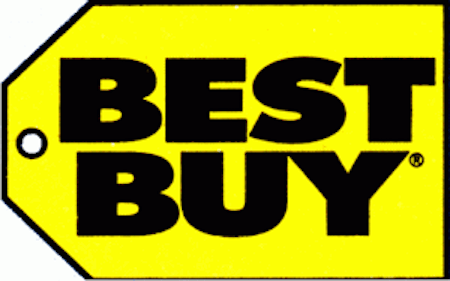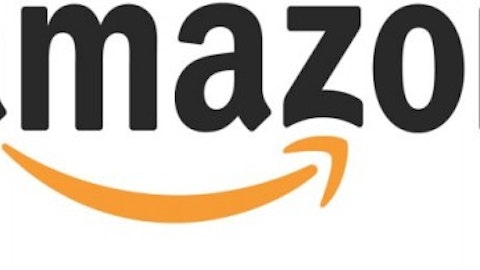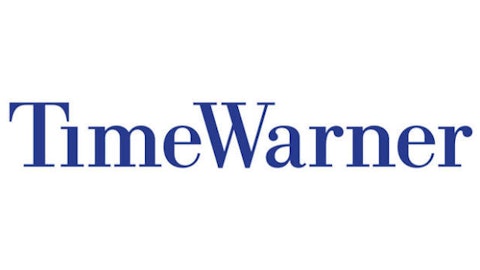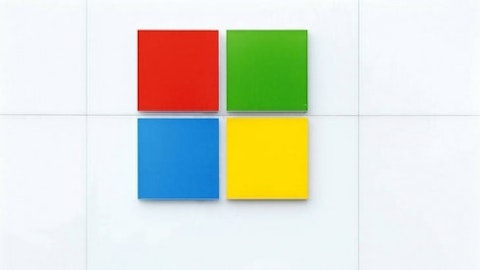
Along with the transition under its new CEO will come some difficult times for the company, and it could be a while, if ever, before profits really surge. Part of the growing pains came last year when the company lost $417 million. A similar loss was echoed by Staples, Inc. (NASDAQ:SPLS) in the same year when that firm lost $161 million.
The common denominator
Last year, overall online sales in the consumer sector increased by 16% to account for nearly 5% of all items sold in the industry. That’s taking much of the sales away from companies like Best Buy Co., Inc. (NYSE:BBY) and Staples, Inc. (NASDAQ:SPLS). The new CEO at Best Buy Co., Inc. (NYSE:BBY), Hubert Joly, is aiming to shrink stores, offer a price-match guarantee and do a better job at training staff. However, he didn’t throw increasing Best Buy’s online presence into the mix.
In addition to last year’s loss, Best Buy was in the red last quarter when it lost $81 million, and a company spokesperson said that will likely happen again next quarter. However, the firm is paying for restructuring. It sold a stake in Best Buy Co., Inc. (NYSE:BBY) Europe and has other restructuring costs. Outside of those expenses, the firm was actually profitable, though revenue did drop by 10.5% to $9.4 billion.
The difference between the firms
Unlike Best Buy Co., Inc. (NYSE:BBY), Staples, Inc. (NASDAQ:SPLS) is focusing much of its attention on integrating online shopping with its stores. The firm is already the No. 2 Internet retailer, behind Amazon.com, Inc. (NASDAQ:AMZN). On June 20, Staples, Inc. (NASDAQ:SPLS) announced the launching two of its “omnichannel stores,” which are attempting to combine online sales with brick and mortar sales. As part of the features, the stores have large kiosks, some of which can help customers buy from the site. Other kiosks provide detailed information about products and where people can find what they are looking for. Even if earnings don’t increase by much due to the new model, the share price could go up because the store repurchases many of its own shares. For example, from 2008 to 2012, the company bought 4.9 million of its own shares. That gives the share price stability.
Amazon.com changes the landscape
Brick and mortar stores like Best Buy Co., Inc. (NYSE:BBY) and Staples, Inc. (NASDAQ:SPLS) are changing the way they operate to try to gain back some of the market share that was lost to Amazon.com. The firm has completely changed the game for the other players in the consumer goods market. Amazon.com, Inc. (NASDAQ:AMZN) offers about 48% of what Staples provides, but usually at a much cheaper rate, according to analyst William Blair and Co. For example, Uni-ball Gel Grip pens cost about $17.99 at Staples, Inc. (NASDAQ:SPLS), but are $13.99 on Amazon.com, Inc. (NASDAQ:AMZN). The company is able offer such low prices because it doesn’t have nearly as much overhead as Best Buy and Staples.
Best Buy doesn’t look to be focused
While Staples, Inc. (NASDAQ:SPLS) is making staggering progress in its ability to compete with Amazon, Best Buy doesn’t look to be making the same effort. The store is often being used by shoppers to browse for products before people go home and buy them for cheaper online. However, Best Buy’s new strategy looks to be similar to that of Home Hardware, which prides itself on a knowledgeable staff and increased sales dramatically after striking that focus. But in a market that is digitally evolving, Best Buy Co., Inc. (NYSE:BBY) might lose out if it doesn’t become more integrated online, particularly because many of its customers are already tech savvy and don’t have a problem shopping online.
The article Are Big Box Stores In Panic Mode Yet? originally appeared on Fool.com and is written by Phillip Woolgar.
Phillip Woolgar has no position in any stocks mentioned. The Motley Fool recommends Amazon.com. The Motley Fool owns shares of Amazon.com and Staples. Phillip is a member of The Motley Fool Blog Network — entries represent the personal opinion of the blogger and are not formally edited.
Copyright © 1995 – 2013 The Motley Fool, LLC. All rights reserved. The Motley Fool has a disclosure policy.




